Yang Qi is the essence of life and serves as the body’s immune system. The more abundant the “Yang Qi,” the stronger the body becomes. Conversely, insufficient Yang Qi leads to weakened immunity and a reduced ability to resist diseases.
According to relevant data, the incidence of Yang deficiency among people is about 9%.
Although it is still spring, the early mornings and evenings in the north remain quite cold. In such fluctuating temperatures, who is most susceptible to harm? Undoubtedly, it is those with Yang deficiency, as they are particularly vulnerable to cold pathogens.
Today, let’s discuss the manifestations of Yang deficiency in various organs!
1
Heart Yang Deficiency
First, let’s look at the upper jiao, which includes the heart and lungs. We will start with Heart Yang deficiency. Individuals with Heart Yang deficiency have insufficient Yang Qi in the heart, lacking the power to promote and warm the body. Symptoms may include palpitations when climbing stairs or running, occasional heart palpitations, anxiety, chest tightness, night sweats, long-term insomnia with vivid dreams, cold limbs, fatigue, pale complexion, or bluish-purple lips, a pale and swollen tongue or a dark purple tongue, white and slippery coating, and a weak pulse that may be intermittent or thready.During cold weather, individuals with inherent Heart Yang deficiency should take precautions. If they experience cold pain in the heart, it should be taken seriously.
Individuals with Heart Yang deficiency have insufficient Yang Qi in the heart, lacking the power to promote and warm the body. Symptoms may include palpitations when climbing stairs or running, occasional heart palpitations, anxiety, chest tightness, night sweats, long-term insomnia with vivid dreams, cold limbs, fatigue, pale complexion, or bluish-purple lips, a pale and swollen tongue or a dark purple tongue, white and slippery coating, and a weak pulse that may be intermittent or thready.During cold weather, individuals with inherent Heart Yang deficiency should take precautions. If they experience cold pain in the heart, it should be taken seriously.
2
Lung Yang Deficiency
The lungs are delicate organs, positioned at the highest point in the body. When external pathogens invade, the lungs are often the first to be affected.If there is an excess of heat pathogens, they can burn the Yin fluids, leading to Lung Yin deficiency (or damage to Lung Yin). When cold pathogens invade the lungs, it naturally harms the Yang Qi of the lungs.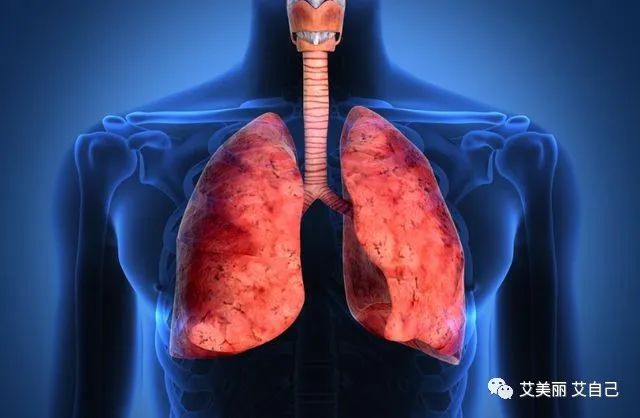 For instance, if cold pathogens invade externally and dry out the lungs internally, it can lead to a mild obstruction of Lung Yang, or in severe cases, damage to Yang Qi, often presenting with chills, fever, cough, clear and thin phlegm, and runny nose. The clear and thin phlegm and runny nose are evidently due to the obstruction of Lung Yang, but this type of condition usually does not lead to Lung Yang deficiency unless it becomes recurrent.Conversely, if there is chronic coughing and wheezing, phlegm and fluids stagnate internally; or if Lung Qi is weak, it can eventually affect Lung Yang; or if there is mutual influence among the organs, such as Spleen and Stomach Yang deficiency, which fails to generate Metal, or Kidney Yang deficiency that cannot warm Lung Yang, all can ultimately lead to the formation of Lung Yang deficiency.The clinical manifestations primarily include cold limbs, shortness of breath, persistent cough, copious thin phlegm, phlegm that is clear or foamy, chest discomfort, pale or sallow complexion, spontaneous sweating, susceptibility to colds, pale or dark tongue, white or slippery coating, and a deep, thin, weak pulse.It should be noted that Qi deficiency often reflects a simpler functional decline, while Yang deficiency is always accompanied by a set of cold symptoms. Qi deficiency is the beginning of Yang deficiency, and Yang deficiency is the severe form of Qi deficiency. Therefore, Lung Yang deficiency will inevitably also present with symptoms of Lung Qi deficiency, such as shortness of breath, fatigue, and pale complexion.
For instance, if cold pathogens invade externally and dry out the lungs internally, it can lead to a mild obstruction of Lung Yang, or in severe cases, damage to Yang Qi, often presenting with chills, fever, cough, clear and thin phlegm, and runny nose. The clear and thin phlegm and runny nose are evidently due to the obstruction of Lung Yang, but this type of condition usually does not lead to Lung Yang deficiency unless it becomes recurrent.Conversely, if there is chronic coughing and wheezing, phlegm and fluids stagnate internally; or if Lung Qi is weak, it can eventually affect Lung Yang; or if there is mutual influence among the organs, such as Spleen and Stomach Yang deficiency, which fails to generate Metal, or Kidney Yang deficiency that cannot warm Lung Yang, all can ultimately lead to the formation of Lung Yang deficiency.The clinical manifestations primarily include cold limbs, shortness of breath, persistent cough, copious thin phlegm, phlegm that is clear or foamy, chest discomfort, pale or sallow complexion, spontaneous sweating, susceptibility to colds, pale or dark tongue, white or slippery coating, and a deep, thin, weak pulse.It should be noted that Qi deficiency often reflects a simpler functional decline, while Yang deficiency is always accompanied by a set of cold symptoms. Qi deficiency is the beginning of Yang deficiency, and Yang deficiency is the severe form of Qi deficiency. Therefore, Lung Yang deficiency will inevitably also present with symptoms of Lung Qi deficiency, such as shortness of breath, fatigue, and pale complexion.
3
Spleen Yang Deficiency
Next, let’s examine Yang deficiency in the middle jiao, which primarily involves the liver and spleen.First, regarding Spleen Yang deficiency, the main symptoms include: cold limbs, reduced appetite, cold pain in the abdomen that prefers warmth and pressure, loose stools, or watery diarrhea with undigested food, or chronic diarrhea, pale complexion, fatigue, a bland mouth, a preference for warm drinks, or vomiting clear saliva, or edema, difficulty urinating, or excessive clear and thin vaginal discharge in women, a pale and swollen tongue or one with tooth marks, white and slippery coating, and a thin, slow, weak pulse.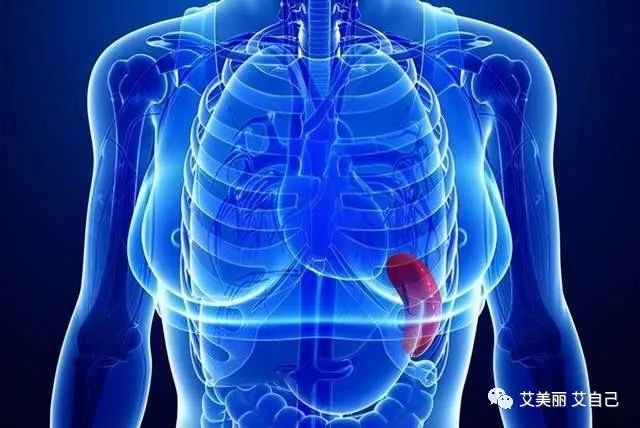 These symptoms become more pronounced as the weather turns cold. When cold pathogens invade, it is very easy to experience vomiting and diarrhea, abdominal pain, and gastric pain. Usually, individuals with Spleen Yang deficiency will feel significant discomfort after consuming cold foods.Thus, Spleen Yang deficiency is one of the most commonly observed conditions. For such individuals, it is essential to pay attention to nurturing, especially regarding diet. It is best to consume warm and nourishing foods while avoiding raw and cold items to allow the body to gradually recover.
These symptoms become more pronounced as the weather turns cold. When cold pathogens invade, it is very easy to experience vomiting and diarrhea, abdominal pain, and gastric pain. Usually, individuals with Spleen Yang deficiency will feel significant discomfort after consuming cold foods.Thus, Spleen Yang deficiency is one of the most commonly observed conditions. For such individuals, it is essential to pay attention to nurturing, especially regarding diet. It is best to consume warm and nourishing foods while avoiding raw and cold items to allow the body to gradually recover.
4
Liver Yang Deficiency
Now, let’s look at Liver Yang deficiency. There are not many discussions on Liver Yang deficiency among practitioners, but all organs have both Yin and Yang, and the liver is no exception. Individuals with Liver Yang deficiency exhibit insufficient liver growth function, leading to stagnation of Liver Wood, resulting in a lack of warmth in the liver channels, causing obstruction in the meridians, which can lead to abdominal pain, lower back pain, male hernias, and female lower abdominal pain. When the fascia fails to warm, it can lead to cramping and pain in the limbs, which is also a manifestation of internal wind from the liver. Additionally, when Liver Blood fails to warm, it can lead to stagnation of Liver Blood, generating internal turbid pathogens, resulting in symptoms such as abdominal pain, bloating, insomnia with vivid dreams, and nighttime agitation.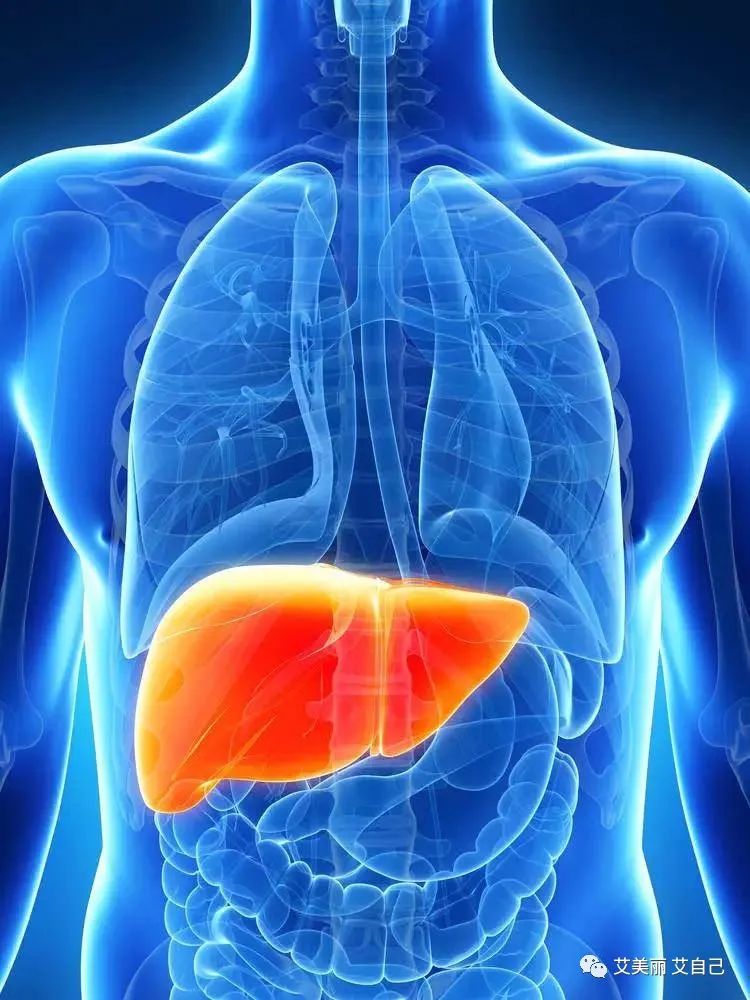 In ancient TCM texts, references to Liver Yang deficiency are rare, making it particularly challenging to find formulas to tonify Liver Yang. Generally, terms like “Liver Cold” or “Cold Stagnation in the Liver Meridian” are more commonly seen.Liver Yang deficiency is characterized by Yang deficiency leading to cold, primarily manifesting as Liver Qi and Blood deficiency, often accompanied by cold limbs, clear urination, loose stools, and cold in the uterus leading to infertility.Therefore, methods to tonify Liver Yang should respect the principle that Yang Qi is based on Yin Blood. The first choice should be warming and nourishing blood tonics like Dang Gui (Angelica Sinensis) and Gou Qi Zi (Goji Berries) to cultivate the foundation, allowing Yin to generate Yang; supplemented with Wu Zhu Yu (Evodia Rutaecarpa) and Rou Gui (Cinnamon) to warm the Yang of the liver and kidneys, dispersing cold pathogens; and then using Chuan Xiong (Ligusticum Chuanxiong) and Wu Yao (Lindera Aggregate) to warm and promote Qi and Blood circulation.In this way, when Blood is abundant and Qi is vigorous, Yang Qi will be generated, cold pathogens will disperse, and Qi and Blood will nourish the meridians, which is the correct method.
In ancient TCM texts, references to Liver Yang deficiency are rare, making it particularly challenging to find formulas to tonify Liver Yang. Generally, terms like “Liver Cold” or “Cold Stagnation in the Liver Meridian” are more commonly seen.Liver Yang deficiency is characterized by Yang deficiency leading to cold, primarily manifesting as Liver Qi and Blood deficiency, often accompanied by cold limbs, clear urination, loose stools, and cold in the uterus leading to infertility.Therefore, methods to tonify Liver Yang should respect the principle that Yang Qi is based on Yin Blood. The first choice should be warming and nourishing blood tonics like Dang Gui (Angelica Sinensis) and Gou Qi Zi (Goji Berries) to cultivate the foundation, allowing Yin to generate Yang; supplemented with Wu Zhu Yu (Evodia Rutaecarpa) and Rou Gui (Cinnamon) to warm the Yang of the liver and kidneys, dispersing cold pathogens; and then using Chuan Xiong (Ligusticum Chuanxiong) and Wu Yao (Lindera Aggregate) to warm and promote Qi and Blood circulation.In this way, when Blood is abundant and Qi is vigorous, Yang Qi will be generated, cold pathogens will disperse, and Qi and Blood will nourish the meridians, which is the correct method.
5
Kidney Yang Deficiency
In the lower jiao, Kidney Yang deficiency is a well-known condition. Individuals with Kidney Yang deficiency have insufficient Mingmen fire, leading to symptoms such as impotence, premature ejaculation, cold and retracted testicles, cold in the lower abdomen, and infertility due to cold in the lower jiao. They may also experience edema, particularly in the lower body; hair loss and premature graying; a weak or overweight physique; and a pale or dark complexion.Individuals with Kidney Yang deficiency often feel more pronounced symptoms in winter. Some may feel extremely fatigued during the day and experience increased nighttime urination, which are manifestations of Kidney Yang deficiency. During this time, the invasion of cold pathogens can lead to more significant issues.
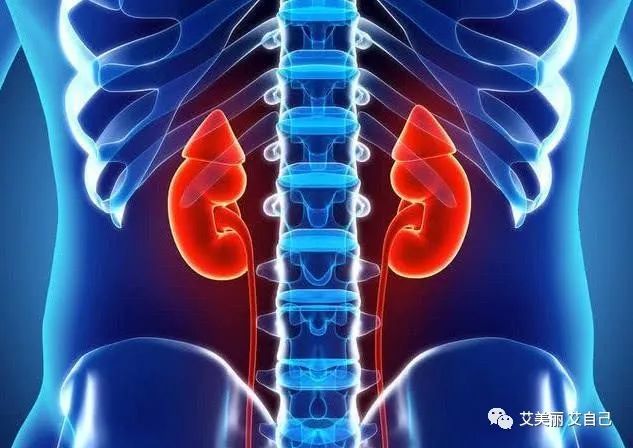
Above, I have broadly discussed the manifestations of Yang deficiency in various organs, providing a general concept. Our overall Yang deficiency in the body will specifically reflect in various organs, sometimes with a particular emphasis, so when regulating, it is necessary to adjust according to the responses of each organ.If you cannot determine where the problem lies, we can also think in reverse: as long as we warm Yang overall, it will be beneficial for the Yang deficiency in each organ.So, you may ask, how can we improve Yang deficiency constitution?
1. Moxibustion to Supplement Yang Qi
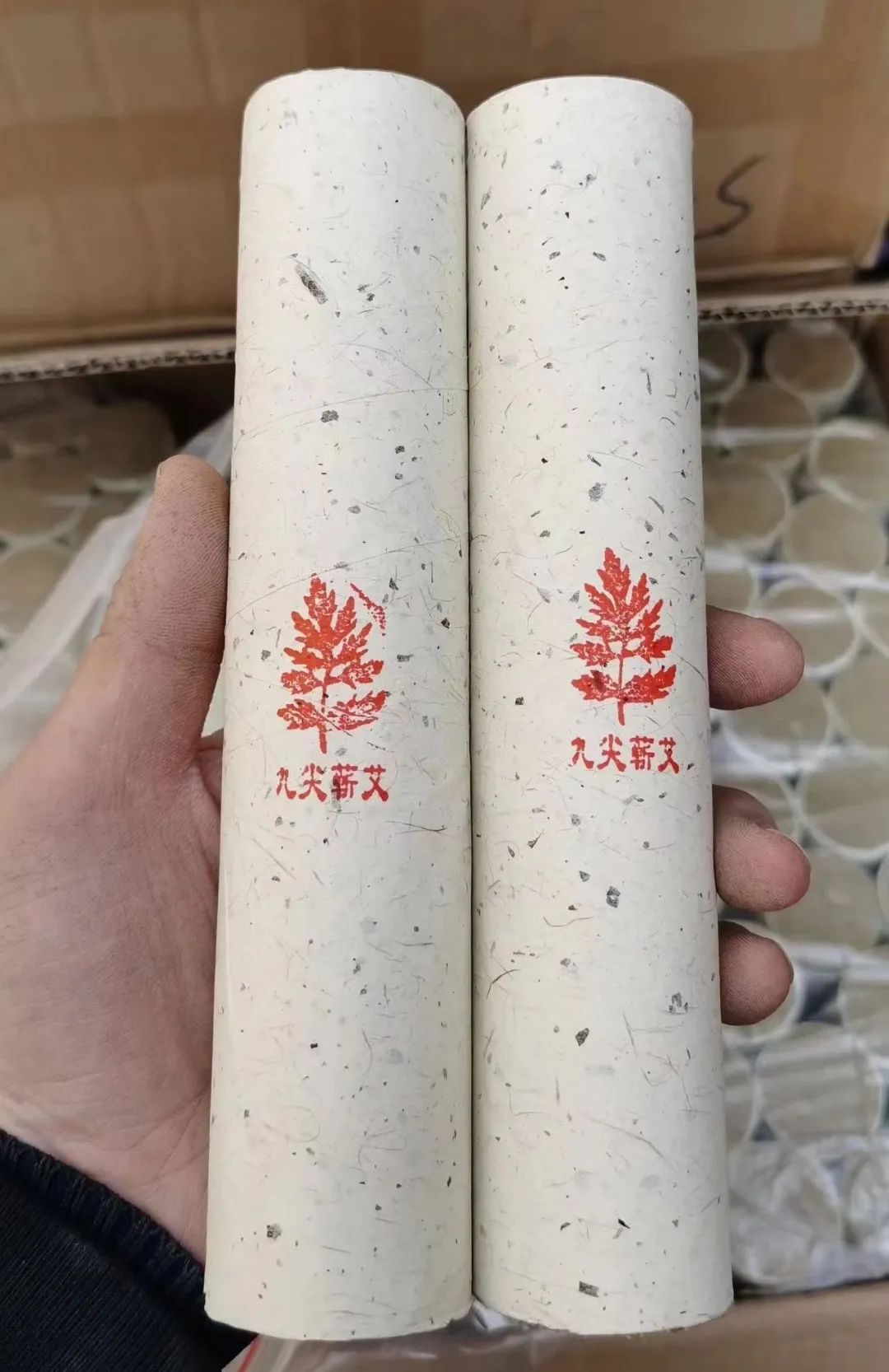
Moxibustion can effectively supplement the Yang Qi of the body, and everyone should learn to perform moxibustion.Using moxibustion to improve Yang deficiency is an excellent choice. You can perform moxibustion on the following acupoints:丨Zu San Li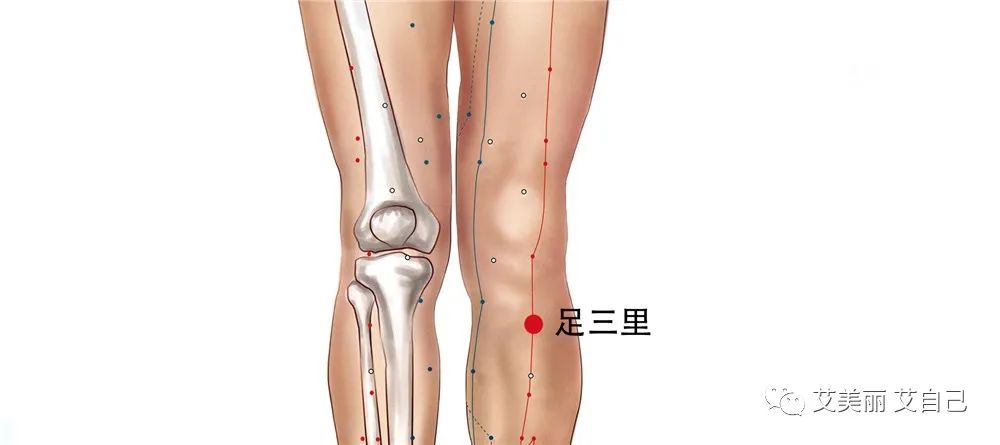 Located on the outer side of the lower leg, 3 inches below the knee joint, 1 finger breadth lateral to the anterior crest of the tibia, on the line connecting the knee joint and Jie Xi (Xiyangguan). Zu San Li is a crucial acupoint for health and wellness, effective for various deficiency syndromes, and is commonly used for daily health maintenance. In addition to using moxa sticks, moxa cones can also be used, which are particularly effective for individuals with weak constitutions who are prone to colds, but care should be taken as moxa cones can cause skin damage.丨Shen Que
Located on the outer side of the lower leg, 3 inches below the knee joint, 1 finger breadth lateral to the anterior crest of the tibia, on the line connecting the knee joint and Jie Xi (Xiyangguan). Zu San Li is a crucial acupoint for health and wellness, effective for various deficiency syndromes, and is commonly used for daily health maintenance. In addition to using moxa sticks, moxa cones can also be used, which are particularly effective for individuals with weak constitutions who are prone to colds, but care should be taken as moxa cones can cause skin damage.丨Shen Que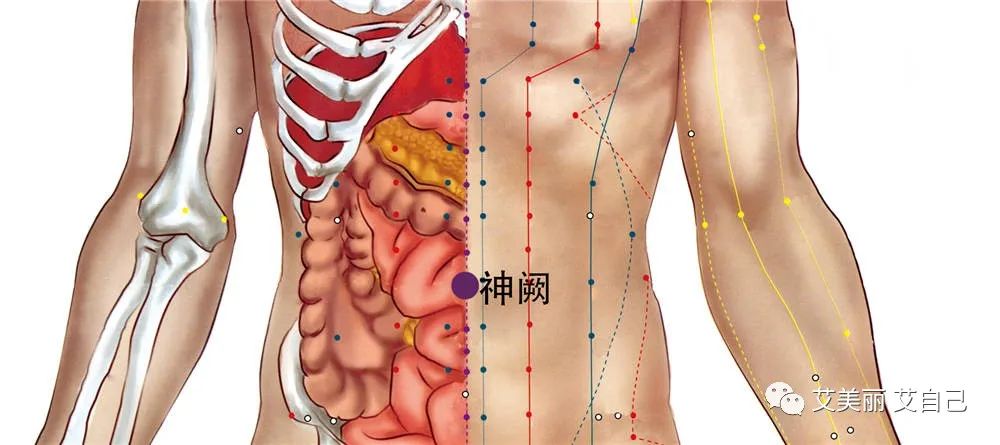 Located at the center of the navel. This point should not be needled; it is often treated with moxa cones or moxa sticks held above it. It has the effect of warming the center and dispersing cold, and can also be used for daily health maintenance and treating cold deficiency diseases. Many moxibustion methods for various constitutions introduced previously also utilize this point.丨Guan Yuan
Located at the center of the navel. This point should not be needled; it is often treated with moxa cones or moxa sticks held above it. It has the effect of warming the center and dispersing cold, and can also be used for daily health maintenance and treating cold deficiency diseases. Many moxibustion methods for various constitutions introduced previously also utilize this point.丨Guan Yuan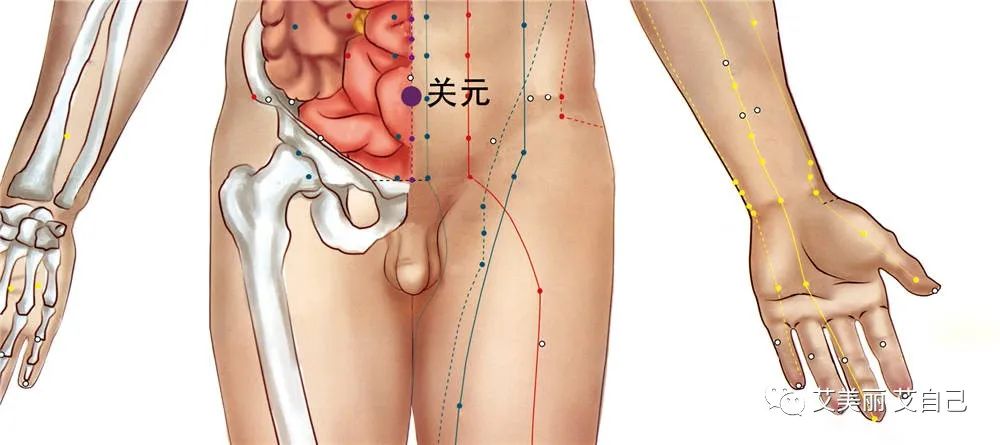 Located in the lower abdomen, 3 inches below the navel, on the anterior midline. This point has excellent strengthening effects and is commonly used for health maintenance, with significant Yang tonifying effects, beneficial for Yang deficiency, collapse syndrome, weakness, and reproductive system diseases.丨Shen Shu
Located in the lower abdomen, 3 inches below the navel, on the anterior midline. This point has excellent strengthening effects and is commonly used for health maintenance, with significant Yang tonifying effects, beneficial for Yang deficiency, collapse syndrome, weakness, and reproductive system diseases.丨Shen Shu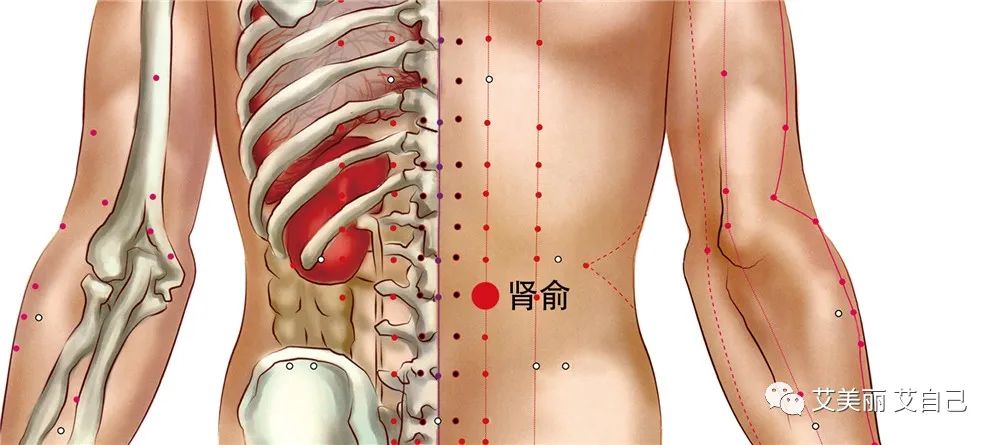 Located in the spinal area, 1.5 inches lateral to the spinous process of the second lumbar vertebra. The back Shu points are generally used for tonifying corresponding organ deficiencies. The warming effect of Kidney Yang is crucial for the body. Many individuals with Kidney Yang deficiency can use Guan Yuan, Shen Que, and Shen Shu for moxibustion.丨Ming Men
Located in the spinal area, 1.5 inches lateral to the spinous process of the second lumbar vertebra. The back Shu points are generally used for tonifying corresponding organ deficiencies. The warming effect of Kidney Yang is crucial for the body. Many individuals with Kidney Yang deficiency can use Guan Yuan, Shen Que, and Shen Shu for moxibustion.丨Ming Men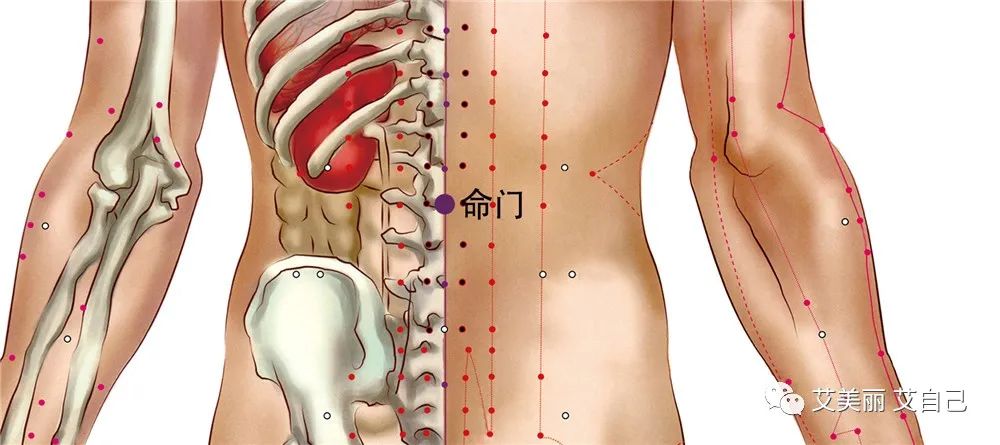 Located in the spinal area, in the depression below the spinous process of the second lumbar vertebra, on the posterior midline. This point has the effect of warming and tonifying Kidney Yang. The points introduced above are all excellent for tonifying, particularly focusing on Kidney Yang.Method of operation: Perform moxibustion on the above acupoints for 10-15 minutes each, once a day, for 6 days as one treatment course. After finishing, rest for one day before starting the next course. After 8 consecutive courses, evaluate the effectiveness.
Located in the spinal area, in the depression below the spinous process of the second lumbar vertebra, on the posterior midline. This point has the effect of warming and tonifying Kidney Yang. The points introduced above are all excellent for tonifying, particularly focusing on Kidney Yang.Method of operation: Perform moxibustion on the above acupoints for 10-15 minutes each, once a day, for 6 days as one treatment course. After finishing, rest for one day before starting the next course. After 8 consecutive courses, evaluate the effectiveness.
2. Foot Soaking to Supplement Yang Qi
In ancient times, foot soaking was a common health practice. “The elderly no longer engage in farming, but they still remember to count the chickens and pigs. Washing feet before bed is truly a joy, as the grandchildren grow up and learn to make soup.” This is a line from Lu You’s poem in the “Jian Nan Poetry Collection.” Throughout history, health practitioners have regarded soaking feet in hot water every night as a method for health maintenance and longevity.
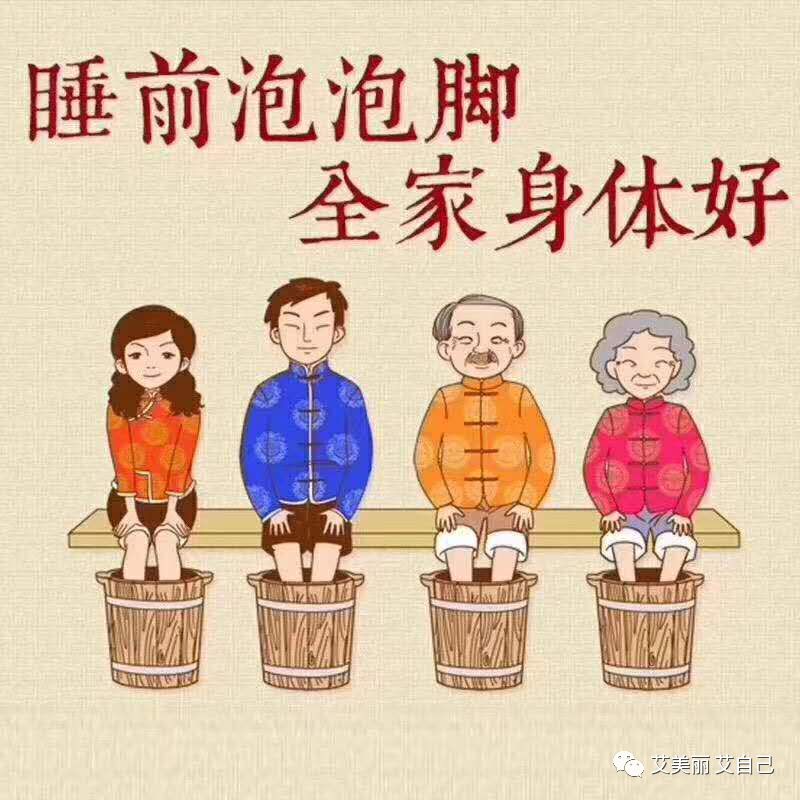
There is a saying: “Soaking feet in spring strengthens Yang; in summer, it removes dampness; in autumn, it nourishes the lungs; in winter, it warms the lower dantian.” These simple words summarize the main benefits of foot soaking throughout the four seasons.
Using Ai Ye (Mugwort) for foot soaking: According to the “Compendium of Materia Medica”: Mugwort leaves are used in medicine, are warm in nature, bitter in taste, non-toxic, and possess pure Yang properties, connecting to the twelve meridians, capable of returning Yang, regulating Qi and Blood, and expelling dampness and cold… thus it is also known as “medicinal herb.”
Su Dongpo said: “The effect of hot foot baths is not immediately noticeable, but after accumulating over a hundred days, the benefits are immeasurable. Compared to taking medicine, the effect is a hundredfold.”
Palace Foot Soaking Package This account has been canceled45
This account has been canceled45
Soaking feet with Mugwort opens the meridians, warms the lower dantian, promotes Qi and Blood circulation, and aids sleep.
Take a small handful of Mugwort, boil it in water, and soak your feet until you start to sweat slightly, but do not sweat profusely. This can be a good method (specific adjustments should be made in consultation with a doctor).For individuals with significant cold and dampness in their bodies, soaking feet in Mugwort water 1-2 times a week is acceptable, but while doing so, it is essential to avoid consuming cold and raw foods. Additionally, drinking ginger and red date tea while soaking can help dispel cold without depleting Qi.
3. Dietary Methods to Supplement Yang Qi
What other methods can warm Yang? One is through diet. First, everyone should avoid cold and raw foods, as well as any medicinal substances that are cold in nature. This is something to learn and understand. If you can control this while also consuming some warming and tonifying foods, I believe the effect will be good.What should be noted about warming tonics? Remember to avoid excessively hot foods. If you have Yang deficiency, you might think, “I can eat spicy hot pot every day!” This is not advisable. Eating spicy hot pot daily is akin to lighting a fire without water in the pot; your fire is too intense, which is not acceptable.What should we do? We should gently warm and tonify the Spleen. Gradually supplementing the Spleen and Kidney with a small fire will yield better results. If you are already Yang deficient and then eat foods that cause diarrhea or upset stomach, it will only worsen your condition. We should gradually adjust with gentle warming, which will yield better results.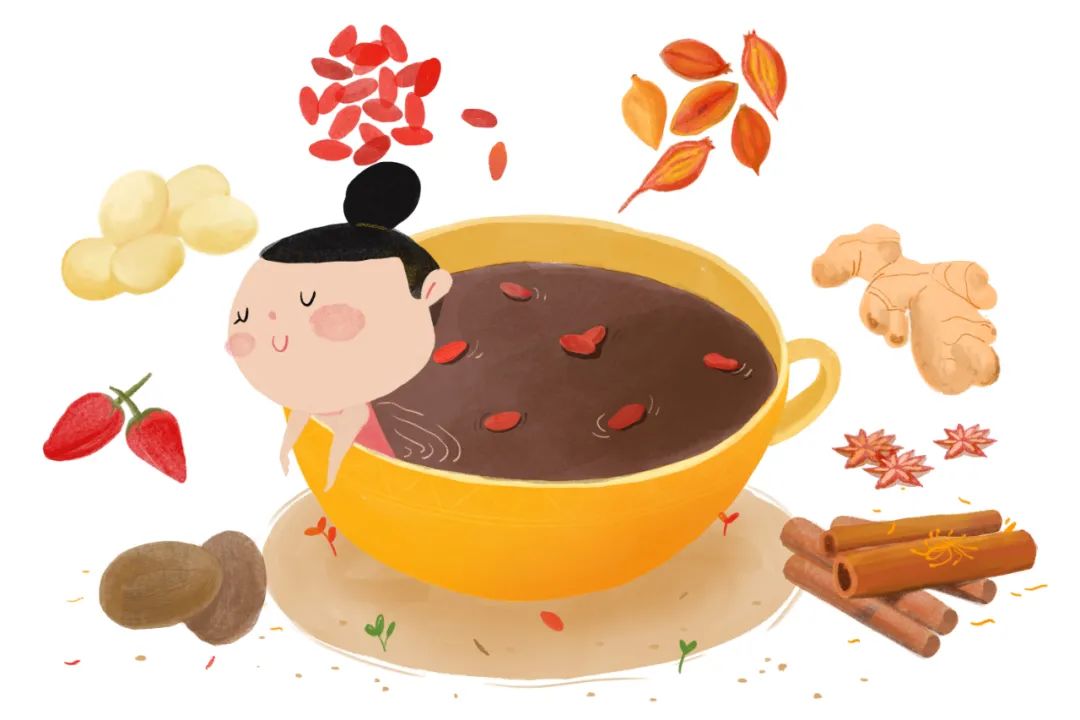 Additionally, regarding soups, when cooking, you can add some warming ingredients. However, in soups, it is beneficial to include nourishing ingredients, using some food-medicinal items. Common warming herbs and foods that supplement Yang Qi include: Yellow Beef, Lamb, Shrimp, Leeks, Chen Pi (Dried Tangerine Peel), Fennel, Longan, Sea Cucumber, etc.Therefore, if everyone can learn about dietary therapy and master these ingredients in the kitchen, I believe you will have reached a high level of health maintenance, and your health will be fundamentally secure.The reason we have Yang deficiency may be due to a lack of understanding in the past, which has harmed our bodies significantly.Now that we have learned, we should start adjusting from all aspects, little by little, and I believe your health will improve, and your Yang Qi will become more vigorous.
Additionally, regarding soups, when cooking, you can add some warming ingredients. However, in soups, it is beneficial to include nourishing ingredients, using some food-medicinal items. Common warming herbs and foods that supplement Yang Qi include: Yellow Beef, Lamb, Shrimp, Leeks, Chen Pi (Dried Tangerine Peel), Fennel, Longan, Sea Cucumber, etc.Therefore, if everyone can learn about dietary therapy and master these ingredients in the kitchen, I believe you will have reached a high level of health maintenance, and your health will be fundamentally secure.The reason we have Yang deficiency may be due to a lack of understanding in the past, which has harmed our bodies significantly.Now that we have learned, we should start adjusting from all aspects, little by little, and I believe your health will improve, and your Yang Qi will become more vigorous.
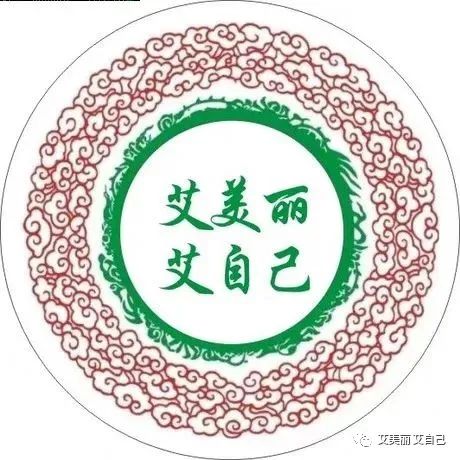
If you like this article
Scan to follow this public account
WeChat: 15893003831
WeChat: 17153919996

